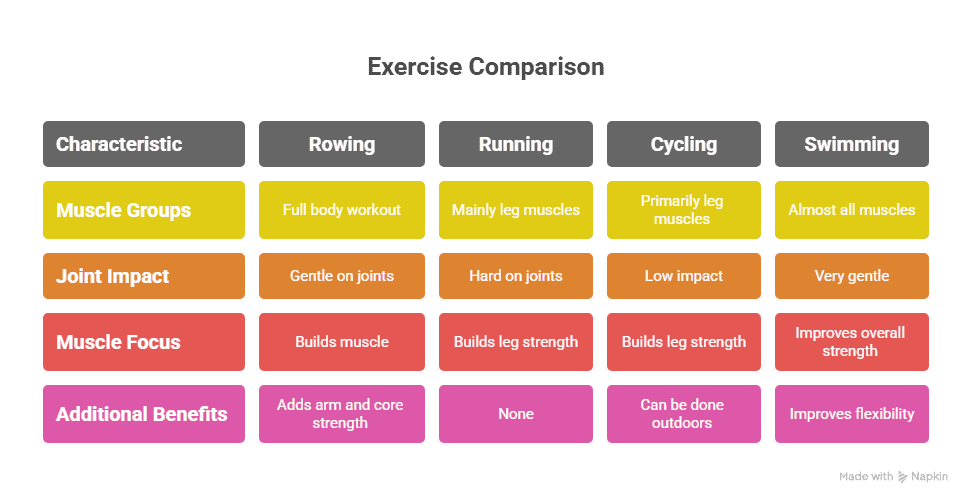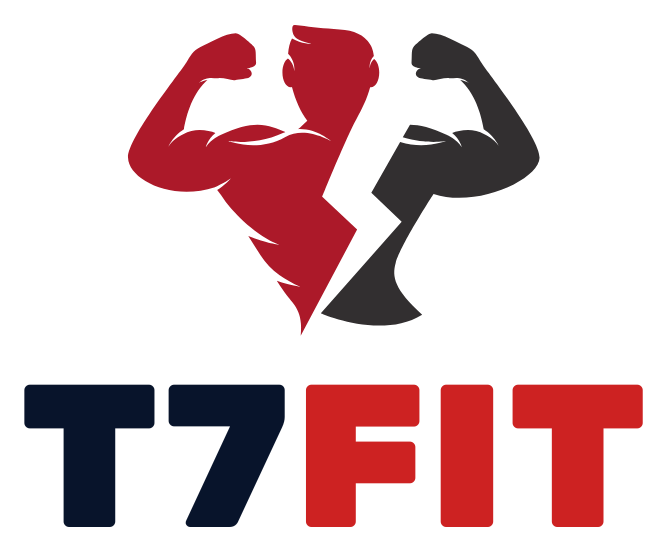Imagine this: just 30 minutes a day, a single machine, and the potential to transform your fitness and overall well-being. Sounds simple, right? But you might be wondering—is rowing for just half an hour really enough to make a difference?
You’re not the only one asking that. In a world where time is limited and workouts need to work, more and more people are turning to rowing as a go-to solution. It’s known for its full-body benefits, but the real question is—can a short daily session truly move the needle on your health goals?
In this article, we’ll break down exactly what 30 minutes of rowing a day can do for your body, how it stacks up against other forms of exercise, and what results you can realistically expect. Whether you’re aiming to lose weight, build strength, boost endurance, or just feel more energized, you’ll find insights here to guide your journey.
So, if you’re ready to discover whether rowing could be the missing piece in your fitness puzzle, let’s dive in.
Benefits Of Rowing
Rowing uses every muscle. Arms, legs, back, and core all work. Muscles grow stronger with each stroke. It’s a balanced exercise. No muscle group is left out. Even a short session counts. Every row builds strength. It’s a complete workout.
Rowing boosts heart health. It increases blood flow. This lowers the risk of heart disease. Heart pumps better with regular rowing. Lungs get stronger too. Breathing becomes easier. Cardio fitness improves greatly. Daily rowing helps the heart stay fit.
Rowing helps the mind relax. Stress fades away. Calmness sets in. Focus sharpens with each row. Confidence grows as skills improve. Mood lifts with regular exercise. Rowing is good for mental health. It keeps the mind clear and happy.
Caloric Burn And Weight Loss
Rowing for 30 minutes can burn many calories. The number depends on your weight. A person weighing 150 pounds might burn about 200 calories. Heavier people burn more calories in the same time. The intensity of rowing also matters. Rowing faster increases the burn.
Burning calories helps with weight loss. You need to burn more calories than you eat. Rowing daily can help with this. It is important to eat healthy food too. Exercise alone is not enough. Combine rowing with a good diet for best results.

Building Strength And Endurance
Rowing targets many muscles. It works legs, arms, back, and core. Leg muscles get stronger with each stroke. Arm muscles pull hard on the oars. Back muscles support your posture. The core keeps you balanced and steady. Each muscle group works together. This builds strength over time.
Rowing boosts endurance. Your heart beats faster. This makes your heart stronger. Breathing gets deeper. Lung capacity increases with practice. You can row longer each day. Energy levels rise as you row. Endurance helps in daily tasks. You feel less tired. Rowing improves stamina greatly.
Comparing Rowing To Other Exercises

Rowing uses both upper and lower body muscles. It strengthens your arms and legs. Running focuses mainly on leg muscles. It builds strong calves and thighs. Rowing is gentle on joints. Running can be hard on knees and ankles. Both burn calories, but rowing works more muscles.
Cycling is great for leg strength. It targets thighs and calves. Rowing adds arm and core strength. Both are low-impact, good for joints. Cycling can be done outdoors. Rowing is often indoors. Both are fun and help with endurance.
Swimming uses nearly all muscles. It’s excellent for strength and stamina. Rowing targets specific muscles in arms and legs. Swimming is gentler on the body. Both are great for heart health. Rowing focuses more on muscle building. Swimming improves flexibility and breath control.
Daily Rowing Routine
Start with a short warm-up. Stretch your arms and legs. Warm muscles work better. Row for 5 minutes slowly. Then speed up a bit. Keep a steady pace. Listen to your body. Don’t push too hard.
Mix rowing with other exercises. Try biking or running on other days. This helps your whole body stay fit. A balanced routine is very important. It keeps things fun and fresh. You won’t get bored easily.
Rest days are important. They help your muscles heal. Without rest, you might get tired. Or even hurt. Plan for at least two rest days each week. Listen to your body. If you feel tired, rest more.
During rest days, do light activities. Take a walk or stretch. It keeps your body active. But it won’t make you tired. Rest is part of getting strong and fit.
Potential Drawbacks
Rowing for 30 minutes daily might not meet everyone’s fitness goals. Some may need longer sessions for muscle gain. Others could find the routine monotonous, potentially affecting motivation.
Risk Of Injury
Rowing every day can lead to injuries. Using the wrong technique is common. Your back and shoulders may hurt. It’s important to learn the right way. This helps to avoid getting hurt. Stretching before rowing can help too. Always listen to your body. Stop if you feel pain. Taking breaks is important. Rest your muscles to avoid injury.
Overtraining Concerns
Overtraining can make you very tired. Your body needs time to recover. Rowing every day might be too much. Muscles need rest to grow strong. Without rest, you might get weaker. It’s good to have a balanced plan. Mix rowing with other activities. This keeps workouts fun and safe. Remember, rest is part of training too.
Expert Opinions
Many trainers agree. Rowing for 30 minutes is a good start. It helps improve cardiovascular health. It also builds muscle strength. Rowing is a full-body workout. It works your arms, legs, and back. Some trainers say it burns lots of calories. Around 200 to 300 calories in 30 minutes. But, results can vary. They depend on your intensity and weight.
Doctors often suggest rowing. It’s gentle on the joints. This makes it suitable for many people. It can help reduce stress and improve mental health. Regular rowing may lower heart disease risk. But, listen to your body. Consult a doctor if unsure. Rowing should feel good, not painful.

Frequently Asked Questions
What Happens If I Row 30 Minutes A Day?
Rowing for 30 minutes daily boosts cardiovascular health, burns calories, and strengthens muscles. It enhances stamina, tones your body, and improves mental well-being. Regular rowing also aids in weight management and boosts overall fitness. This low-impact exercise supports joint health and provides a full-body workout efficiently.
How Many Minutes Of Rowing Is Effective?
Rowing for 20-30 minutes daily is effective for cardiovascular health and calorie burning. Consistent sessions improve endurance and strength. Adjust intensity to your fitness level for optimal results. Prioritize proper form to prevent injuries and maximize benefits.
Can You Get In Shape By Just Rowing?
Rowing effectively builds strength, endurance, and cardiovascular fitness. It’s a full-body workout targeting muscles like arms, legs, and core. Consistent rowing can significantly improve physical shape. Complement with a balanced diet for optimal results.
Can You Lose Belly Fat By Rowing?
Yes, rowing helps lose belly fat. It is a full-body workout that burns calories and strengthens muscles. Combining rowing with a balanced diet and regular exercise accelerates fat loss. Consistency is key for effective results. Incorporate rowing into your routine for improved fitness and a toned abdomen.
Conclusion
Rowing for 30 minutes daily can be beneficial. It boosts heart health and muscle strength. This exercise is great for burning calories too. Feeling more energetic and focused is another perk. It’s suitable for various fitness levels. Consistency is key to seeing results.
Everyone’s body responds differently, so listen to yours. Adjust your routine as needed. Start slow and build up gradually. Keep it fun and enjoyable. A little rowing can go a long way in a healthier lifestyle. Embrace the journey to better fitness.
Your health deserves it.
Related Post:
